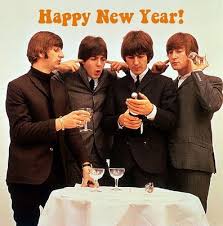
- Register
- Log in to Tune-In
- Wishlist (0)
-
Shopping cart
(0)
You have no items in your shopping cart.
Beatles A Day in the Life Blog posts of '1966' 'December'
Studio Two, EMI Studios, London
The mono mixes of "When I'm Sixty-Four" done on December 29th and marked "best" for the UK and US did not satisfy Paul. He suggested that they scrap all previous mixes and begin again, speeding up the new mix by as much as a semitone, a big difference. Such work began this 7:00 pm to 3:00 am session, and was followed by the making of simple tape-to-tape copies of the "best" mono mix of "Strawberry Fields Forever" from the previous afternoon. The remainder of the session was devoted to "Penny Lane", with a reduction of take six into take seven and an overdub of Paul's lead vocal, backed by John. It was well into the wee hours by the time these had been taped, so the other overdubs planned for the song had to wait until the next session and another year - 1967. All that was left to do in 1966 was mix into mono "Penny Lane", as it presently stood, so that an acetate disc could be cut.
Source: The Complete Beatles Chronicles
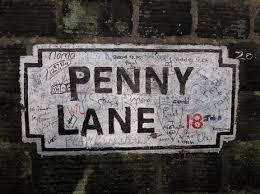
Recording, mixing, editing: When I’m Sixty-Four, Strawberry Fields Forever, Penny Lane
Studios Two and Three, EMI Studios, Abbey Road
Work took place on three different songs on this day, during three different sessions. The songs were When I'm 64, Strawberry Fields Forever and Penny Lane.
The first session took place in the control room of Studio Three from 2.30-4.45pm. Four mono mixes of When I'm Sixty-Four were made, numbered 4-7. Mix number six was intended for the US market, and seven for the UK, but neither was used. Instead a new mono mix was made on the following day, rendering all these redundant.
Also for the US market, a tape copy was made of the December 22nd mono mix of Strawberry Fields Forever. In the second scheduled session, which began immediately after the first at 4.45pm and ended at 5.40pm, stereo mixes of the song were made.
The new mixes again required matching the tempos and keys of the two recorded versions, as George Martin and Geoff Emerick had done in the previous session. The first mix was of take seven, followed by one of take 26, followed by an edit of the two which was labelled remix three.
The results were deemed unsatisfactory, so a fourth mix was made of take 26. This was combined with the beginning of mix one to create a final stereo mix, numbered five.
In Studio Two between 7pm and 2.15am the following morning,Paul McCartney worked without the other Beatles on the first takes of Penny Lane. At this stage the song was known as Untitled, although McCartney had been speaking about writing a song titled Penny Lane since at least November 1965.
The recording of Penny Lane was almost as complex as for Strawberry Fields Forever. To begin with, McCartney laid down six takes of the piano backing track, and onto track two of the final attempt he added a second piano to the latter half of each verse. Track three was filled with a third piano part as well as tambourine, both of which were recorded via microphone signals fed through a Vox guitar amplifier.
The final track of the tape was filled with effects, some vari-speeded, including percussion, high two-note chords from a harmonium, and cymbals.
Work on Penny Lane continued on December 30, 1966 and into the following year.
Source: The Beatles Bible
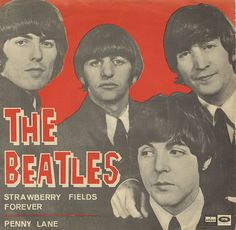
The Beatles taking a break in-between recording sessions at EMI Studios in London
The Beatles are in-between recording sessions at EMI Studios.
December 26, 1966 - "John Lennon" appears as a washroom attendant reading extracts from his book, in "Peter Cook" and "Dudley Moore" is BBC television programme, "Not Only … But Also", on BBC-2 broadcasts..
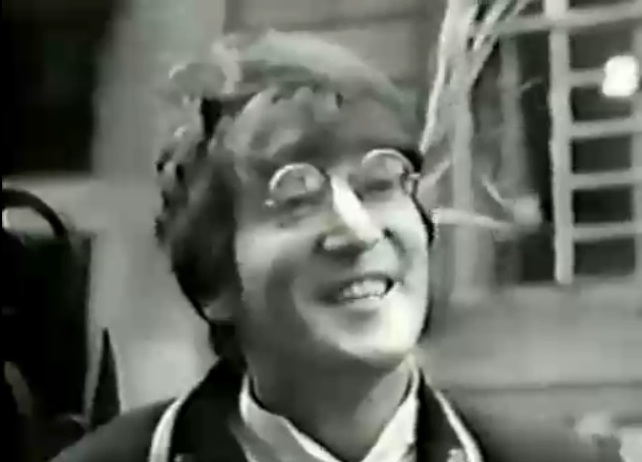
MERRY CHRISTMAS FROM JOHN, PAUL, GEORGE AND RINGO!

Merry Christmas Eve from the Beatles!
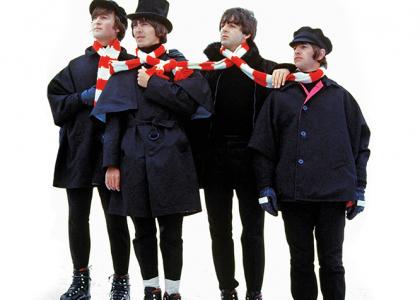
Strawberry Fields Forever was finally completed the day before. Now the Beatles are taking a break until after Christmas.
Studio Two, EMI Studios, Abbey Road
Mixing, editing: Strawberry Fields Forever
After reviewing the tapes of previous sessions, John Lennon decided that he liked both the original recording of Strawberry Fields Forever and the later remake. He asked George Martin to join them together, despite them being in different keys and tempos.
George Martin - That November John came into the studio, and we went into our regular routine. I sat on my high stool with Paul standing beside me, and John stood in front of us with his acoustic guitar and sang the song. It was absolutely lovely. Then we tried it with Ringo on drums, and Paul and George on their bass and electric guitars. It started to get heavy - it wasn't the gently song that I had first heard. We ended up with a record which was very good heavy rock. Still, that was apparently what John wanted, so I metaphorically shrugged my shoulders and said: 'Well, that really wasn't what I'd thought of, but it's OK.' And off John went.
A week later he came back and said: 'I've been thinking about it, too, George. Maybe what we did was wrong. I think we ought to have another go at doing it. Up to that time we had never remade anything. We reckoned that if it didn't work out first time, we shouldn't do it again. But this time we did. 'Maybe we should do it differently,' said John. 'I'd like you to score something for it. Maybe we should have a bit of strings, or brass or something.' Between us we worked out that I should write for cellos and trumpets, together with the group. When I had finished we recorded it again, and I felt that this time it was much better. Off went John again.
A few days later he rang me up and said: 'I like that one, I really do. But, you know, the other one's got something too,'
'Yes, I know,' I said, 'they're both good. But aren't we starting to split hairs?'
Perhaps I shouldn't have used the word 'split', because John's reply was: 'I like the beginning of the first one, and I like the end of the second one. Why don't we just join them together?'
'Well, there are only two things against it,' I said. 'One is that they're in different keys. The other is that they're in different tempos.'
'Yeah, but you can do something about it, I know. You can fix it, George.'
And indeed he could, during this 7-11.30pm session. The first recording had been performed in C major, while the second was in A major. Against the odds, Martin and engineer Geoff Emerick found that by speeding up the first version and slowing down the second, they matched perfectly. The resulting pitch was around B flat.
We gradually decreased the pitch of the first version at the join to make them weld together.First of all new mono mixes were made of both versions. These were numbered RM10 (remix mono 10) from take 7, and RM11 from take 26 (the remake). The mixes were then edited together, and the resulting version was named RM12.
The edit can be found at approximately one minute into the song, following the words "Let me take you down, 'cause I'm". From the first cello note onwards, the sound of the remake is heard.
Sources: Beatles Bible and The Complete Beatles Chronicle
- 1962
- 1963
- 1964
- 1965
- 1966
- 1967
- 1968
- 1969
- 1970
